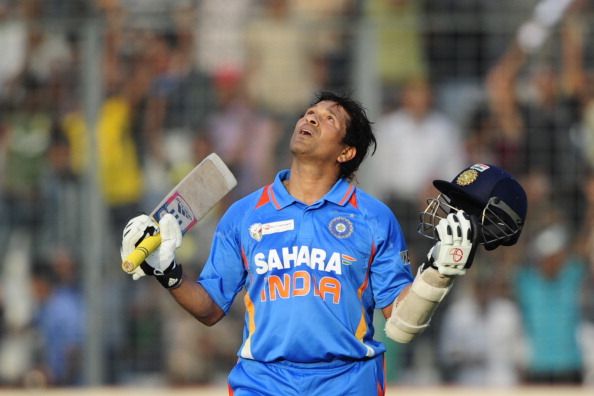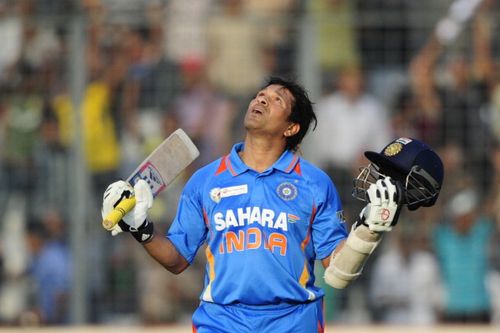
Sachin Tendulkar: God as I knew him

Countless books, articles, interviews, stories of which the focus has been the demigod, the master blaster, the best batsman in the world – Sachin Tendulkar. Reams have been written about Sachin Tendulkar, about his temperament, his consummate team-player attitude, his larger than life image and of course, his incomparable batting talent. But to the average cricket fan, growing up in the 90s, Sachin Tendulkar represented something else – a sole ray of hope around which a ramshackle team huffed and puffed for more than a decade, in its much too often attempts to snatch defeat from the jaws of victory. The Hero Cup final in 1993, the twin innings in the Coca Cola Cup in 1998, the futile Chennai Chase of 1999 and most importantly, the World Cup 1996 debacle at the Eden Gardens – these are more than a collection of remembrances that everyone who has been part of those moments, whether on the ground, in the stadium or glued to their TV sets will never forget: they were instances of genius attempting to burst through cobwebs of mediocrity. Many times, it was successful. Yet, heartbreakingly often, it was not enough.
The first time I saw Tendulkar bat was in a 1992 World Cup match vs Australia. A fierce pull that sent the ball racing to the mid wicket fence was followed by the commentator’s stentorian voice “And that is why this young man is one of the most promising batsmen in limited overs cricket today”. Promise, a synonym for talent perhaps, or was it heavily veiled sarcasm, aimed at a nation that regularly produced oodles of talent but had made little impact since the great Gavaskar bid adieu in 1987. Yes, the Azhars, Shastris, Vengsarkars and Kapil Devs were all there – on paper, India was a talented squad. But since the 1989 Pakistan tour and especially after New Zealand 1994, a young boy was called upon to uphold a nation’s cricketing honour when the men around him surrendered meekly. I have followed Sachin’s career, as have a million others, for the past 24 years and the thing that has most impressed me most about this little man is his aura of quiet aggression – something Bruce Lee described as emotional content, not anger – the ability to intimidate opponents with his creativity and attitude, rather than physical presence.
The 1996 World Cup, held in February-March 1996, in my mind was the showcase of Tendulkar’s early career – the firebrand batsman, at once cautious and carefree, carrying the fragile hopes of a billion people, yet expressing himself with abandon when opportunity presented itself. He had not yet graduated to the senior statesman that he is today, letting experience dictate his decision making and shot selection. No, he was very much the instinctive young predator – patient enough to wait for openings and play according to situations, but arrogant enough to hit a bowler of Glenn McGrath‘s stature for three boundaries in an over in an era when cricket was much more sedate and such feats were unheard of. The event was especially important, coming just before India’s golden generation of batsmen took their first steps, starting with the tour of England in the summer of 1996, towards reinventing a long forgotten batting pedigree and rediscovering national pride on the cricket field, the most shining example of which was achieved at Chennai in 2001, when India conquered the unbeatable Australians.